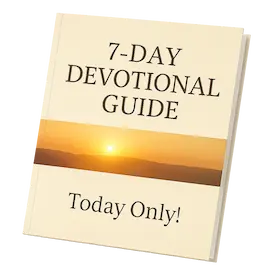Starting From The Roots: A Brief History of Catholicism
First of all, the Catholic Church stands as the largest Christian denomination, with over 1.3 billion adherents worldwide. Its history is deeply intertwined with the life and teachings of Jesus Christ and the efforts of his apostles, particularly Saint Peter.
The term “Catholic,” derived from the Greek word katholikos, meaning “universal,” was first used to describe the Church by Saint Ignatius of Antioch in the early second century. This universality underscores the Church’s mission to spread the Gospel to all corners of the world.
Where Catholicism Begins
Its roots trace back to the ministry of Jesus in Roman-occupied Jewish Palestine around 30 CE. According to Catholic teaching, Jesus founded the Church through his apostles, entrusting them with the continuation of his mission.
He told Peter,
“You are Peter, and on this rock I will build my church” (Matthew 16:18, NIV).
And this is why Catholics see this apostle as the first pope. The first leader of a Church meant to be universal, for all people everywhere.
Survival and Growth Under the Roman Empire
After Pentecost (Acts 2), the apostles spread out across the Roman Empire, preaching the gospel. Early Christian communities appeared slowly in major cities like Jerusalem, Antioch, Alexandria, and Rome.
Rome quickly became a centre because Peter and Paul were both martyred there. Within a few centuries, what we now call the Catholic Church was already taking root.
But it wasn’t easy. Early Catholics faced brutal persecution under Roman emperors like Nero and Diocletian. They met in secret, worshiped in catacombs, and often sealed their faith with martyrdom. Yet somehow, against all odds, Catholicism survived.
By 313 AD, things changed. Emperor Constantine issued the Edict of Milan, legalizing Christianity, and in 380 AD, Emperor Theodosius made Catholic Christianity the official state religion of the Roman Empire.
Catholic beliefs and practices, shaped in fire and blood, now had the chance to shape an entire civilization.
Building Doctrine and Church Structure
At this point in time, early Church Fathers (giants like Augustine, Athanasius, Jerome, and Ambrose) changed the tapestry of belief forever. They wrote, debated, and defined what it meant to be a Christian.
They debated doctrines like the Trinity (Matthew 28:19) and the dual nature of Christ (John 1:14). Their writings, like Augustine’s Confessions or Athanasius’ On the Incarnation, are still relevant in today’s Catholic core beliefs.
The Catholic Church’s structure also took form during this time. Bishops led local churches, priests served the people, and deacons cared for the poor.
The bishop of Rome, called the pope, gradually emerged as the visible symbol of unity for the whole Church, claiming a leadership role based on Peter’s unique position among the apostles.
At the turn of the century, during the Middle Ages, Catholicism became the beating heart of European culture.
Monasteries preserved ancient books, scholars like Thomas Aquinas built philosophical systems (like his Summa Theologica), and Catholic cathedrals were pretty much everywhere. The Church was in everything at that time: in art, music, politics, and daily life.
Challenges, Reformations, and Modernization
Despite its expansion, the Catholic Church faced crises too: corruption, political entanglements, and ultimately the Protestant Reformation in the 16th century.
Reformers like Martin Luther challenged Catholic teachings, leading to major fractures. In response, the Catholic Church launched the Counter-Reformation, with the Council of Trent (1545-1563) reaffirming key Catholic doctrines like the Sacraments and the authority of Tradition alongside Scripture (2 Thessalonians 2:15).
In more recent history, the Second Vatican Council (1962-1965) brought fresh reforms, making Mass available in local languages and encouraging deeper engagement with the modern world.
Catholicism continues to grow and adapt today, holding fast to its ancient roots while responding to new challenges. Understanding Catholicism’s history is about seeing how a small, persecuted movement grew into the global faith that still touches billions of lives.
We need to realize that the Catholic religion’s beliefs didn’t pop up randomly. Actually, they were forged over centuries of prayer, struggle, debate, and deep love for Jesus Christ.
Catholicism isn’t perfect (as no human institution is), but it’s living proof of Jesus’ promise:
“I am with you always, to the very end of the age” (Matthew 28:20, NIV).
A close-up of hands lighting a candle in a Catholic church prayer corner (image generated with Midjourney)
10 Key Catholic Religious Beliefs Explained
If you’ve been wondering, “What do Catholics believe in?”, you’re not alone. After a lengthy, complex history, after reshaping the Church and adapting to centuries of constant change, Catholicism still holds on to some key principles. Let’s explore them:
1. The Belief in One God
Catholics believe there is one God who exists eternally as Father, Son, and Holy Spirit. It’s one divine nature in three Persons.
Jesus confirmed this when He told His followers to baptize”
“in the name of the Father and of the Son and the Holy Spirit” (Matthew 28:19).
If you’ve ever wrestled with the idea of the Trinity, you’re in good company. Early Christians spent centuries (and a few councils) sorting this out.
2. Jesus Christ is the True God and the True Man
In Catholicism, Jesus isn’t half-God, half-man. He’s 100% both. This belief was pinned down at the Council of Chalcedon (451 AD), and is based on the words from John 1:14:
“The Word became flesh and dwelt among us.”
The Church Fathers defended this belief against heresies like Arianism (which denied Christ's divinity).
3. Revelation Comes Through Scripture and Tradition
Catholics believe God reveals Himself through the Bible and the living Tradition of the Church:
"So then, brethren, stand firm and hold to the traditions which you were taught by us." (2 Thessalonians 2:15).
The Bible wasn’t handed down with an instruction manual. It was the Church, guided by the Holy Spirit, that preserved and interpreted it from the beginning.
4. The Sacraments
Catholicism recognizes seven Sacraments as visible signs of God’s invisible grace.
These sacred practices are:
- Baptism (Matthew 28:19);
- Eucharist (Luke 22:19-20);
- Reconciliation (John 20:23);
- Confirmation (Acts 8:14-17);
- Anointing of the Sick (James 5:14);
- The Holy Orders (2 Timothy 1:6);
- Matrimony (Ephesians 5:31-32).
St. Thomas Aquinas famously called the Sacraments "necessary for salvation" in his "Summa Theologica".
5. The Eucharist As The Real Presence of Christ
At Mass, Catholics believe the bread and wine literally become Jesus’ Body and Blood.
When Jesus said, “This is my body…this is my blood” (Mark 14:22-24), Catholics take Him at His word. Early Christians like Ignatius of Antioch wrote about this belief as early as 110 AD.
The doctrine of the Real Presence was upheld strongly by Church Fathers like Ignatius of Antioch and Justin Martyr.
6. Salvation by Grace
Catholics believe salvation is God’s gift, completely undeserved and freely offered. We are reminded in Ephesians 2:8-9 that “by grace you have been saved through faith, and this is not your own doing; it is the gift of God”.
Augustine championed grace against Pelagianism, insisting that even our ability to respond to God is itself a gift.
7. The Church as the Body of Christ
The Catholic Church sees itself as the visible Body of Christ on earth:
"Now you are the body of Christ and individually members of it" (1 Corinthians 12:27).
Jesus established it, promised the gates of hell wouldn’t overcome it (Matthew 16:18), and gave it authority to teach and shepherd until He returns.
8. Mary and the Saints Are Our Spiritual Family
Catholics honor Mary and the saints, asking for their prayers but reserving worship for God alone. Mary’s special because she said yes to God in the biggest way imaginable (Luke 1:38), and Catholics believe she continues to point us to her Son.
The early Church revered martyrs and sought their intercession, as seen in catacomb inscriptions and writings like "The Martyrdom of Polycarp".
9. The Reality of Heaven, Hell, and Purgatory
Catholics believe in eternal destinations after death. Heaven is a perfect union with God (John 14:2-3). Hell is total separation (Matthew 25:46). Purgatory (1 Corinthians 3:15) is God’s way of refining those who die in His friendship but still need healing.
The concept of Purgatory was developed more fully in the early Church through thinkers like Gregory the Great.
10. The Second Coming of Christ
Catholics live in hope that Jesus will return to judge the living and the dead. As it’s stated in Acts 1:11:
"This Jesus, who was taken up from you into heaven, will come in the same way as you saw him go into heaven".
The Nicene Creed, affirmed in 325 AD, openly proclaims the hope of Christ's return.
The firm belief is about longing for a world finally made right.
Get Closer to God Today
4.9
Average Rating
|Over 5 Million Downloads
Catholic Practices
Catholicism is a living faith that shows up in everyday practices rooted in both Scripture and tradition. The Roman Catholic practices help bring the core Catholic beliefs to life in tangible ways. Let’s explore them:
- Mass attendance is central to Catholic life, fulfilling the command to “do this in remembrance of me” (Luke 22:19).
- Catholics celebrate the Eucharist weekly, believing it to be the real presence of Christ, not just a symbol.
- Prayer is another pillar—whether it’s the formal beauty of the Our Father (Matthew 6:9-13) or the quiet rhythm of the Rosary, Catholics are taught to pray without ceasing.
- Sacraments mark major life moments: Baptism welcomes you into the Catholic faith, while Reconciliation offers healing and forgiveness.
- Acts of charity, fasting during Lent, honoring saints, and upholding Catholic values in daily life are all part of Catholic religious practices.
Far from being random rituals, Catholic practices connect back to the earliest Christians, shaped by the teachings of the apostles and the early Church Fathers. They’re about living what you believe, and carrying the Catholic faith into the world, one act at a time.

A family receiving communion during Mass (image generated with Midjourney)
Common Misunderstandings about Catholic Beliefs
A lot of confusion surrounds what Catholics believe. Some people think Catholicism teaches the worship of Mary and the saints, but the Catholic Church is clear: worship is for God alone (Exodus 20:3). Asking saints for prayers is more like asking a friend to pray for you.
Others think Catholics don’t believe in the Bible, but in fact, Scripture is central to Catholic religious beliefs, alongside sacred Tradition (2 Thessalonians 2:15).
Misunderstandings about Catholicism often come from missing the deep roots of the Catholic faith, shaped by the teachings of Jesus, the apostles, and the early Church Fathers.
Final Thoughts: What Do Catholics Believe?
At the end of the day, understanding the Catholic ideology means seeing a faith that’s deeply rooted in Scripture, tradition, and a living relationship with God.
Catholic beliefs center on one God in three persons, the life, death, and resurrection of Jesus Christ, and the ongoing guidance of the Catholic Church.
Catholicism teaches that salvation comes by grace through faith, made alive in works of love (James 2:17). Through Catholic practices like the Sacraments, prayer, and acts of charity, Catholics live out their religious beliefs day by day.
What sets Catholicism apart is its rich embrace of both the Bible and sacred Tradition (2 Thessalonians 2:15), both seen as trustworthy sources of God’s revelation.
Catholic views on Mary, the saints, the Eucharist, and the authority of the Church all flow from these foundations. The heart of it always comes back to Christ and His promise to be with His Church until the end of time (Matthew 28:20).
Understanding what is Catholic religion isn’t just about history or rules, it’s about a living, breathing community still seeking to follow Jesus Christ today.
If this deep dive into Catholic belief stirred more questions for you, don’t stop here. The Bible Chat App is a perfect companion for exploring Catholic teachings, Scripture, early Church history, and Christian faith more deeply. You can ask honest, heartfelt questions, and get clear, Bible-based answers tailored to your journey.
Get Closer to God Today
4.9
Average Rating
|Over 5 Million Downloads
References
The Holy Bible, New International Version (NIV). Zondervan, 2011.
Catechism of the Catholic Church. 2nd ed. Vatican City: Libreria Editrice Vaticana, 1997.
Vidmar, John. The Catholic Church Through the Ages. Paulist Press, 2005.
Bokenkotter, Thomas. A Concise History of the Catholic Church. Doubleday, 2004.











